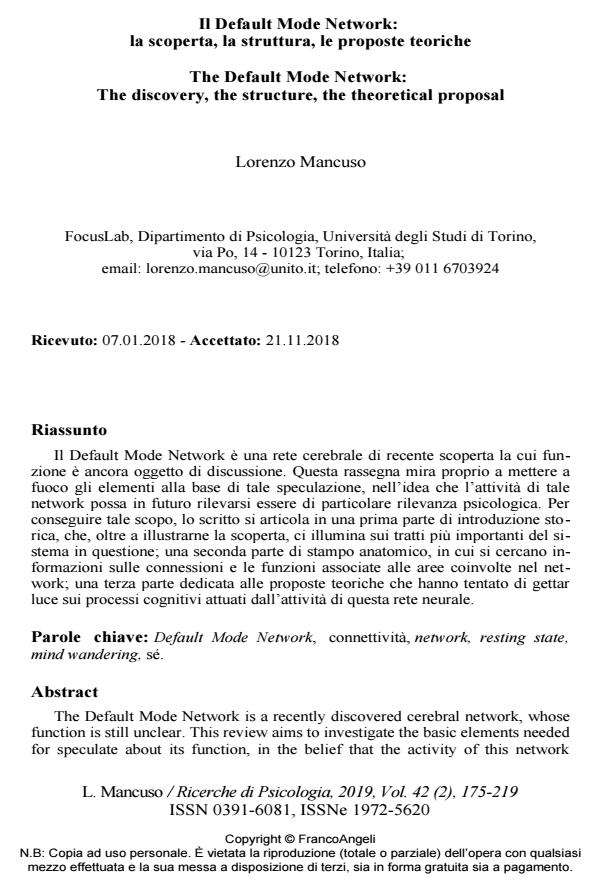Il Default Mode Network: la scoperta, la struttura, le proposte teoriche
Titolo Rivista RICERCHE DI PSICOLOGIA
Autori/Curatori Lorenzo Mancuso
Anno di pubblicazione 2019 Fascicolo 2019/2
Lingua Italiano Numero pagine 45 P. 175-219 Dimensione file 472 KB
DOI 10.3280/RIP2019-002001
Il DOI è il codice a barre della proprietà intellettuale: per saperne di più
clicca qui
Qui sotto puoi vedere in anteprima la prima pagina di questo articolo.
Se questo articolo ti interessa, lo puoi acquistare (e scaricare in formato pdf) seguendo le facili indicazioni per acquistare il download credit. Acquista Download Credits per scaricare questo Articolo in formato PDF

FrancoAngeli è membro della Publishers International Linking Association, Inc (PILA)associazione indipendente e non profit per facilitare (attraverso i servizi tecnologici implementati da CrossRef.org) l’accesso degli studiosi ai contenuti digitali nelle pubblicazioni professionali e scientifiche
Il Default Mode Network e una rete cerebrale di recente scoperta la cui funzionepe ancora oggetto di discussione. Questa rassegna mira proprio a mettere apfuoco gli elementi alla base di tale speculazione, nell’idea che l’attivita di talepnetwork possa in futuro rilevarsi essere di particolare rilevanza psicologica. Perpconseguire tale scopo, lo scritto si articola in una prima parte di introduzione storica,pche, oltre a illustrarne la scoperta, ci illumina sui tratti piu importanti del sistemapin questione; una seconda parte di stampo anatomico, in cui si cercano informazionipsulle connessioni e le funzioni associate alle aree coinvolte nel network;puna terza parte dedicata alle proposte teoriche che hanno tentato di gettarpluce sui processi cognitivi attuati dall’attivita di questa rete neurale.p
Parole chiave:Default Mode Network, connettivita, network, resting state,pmind wandering, se.p
Lorenzo Mancuso, Il Default Mode Network: la scoperta, la struttura, le proposte teoriche in "RICERCHE DI PSICOLOGIA " 2/2019, pp 175-219, DOI: 10.3280/RIP2019-002001